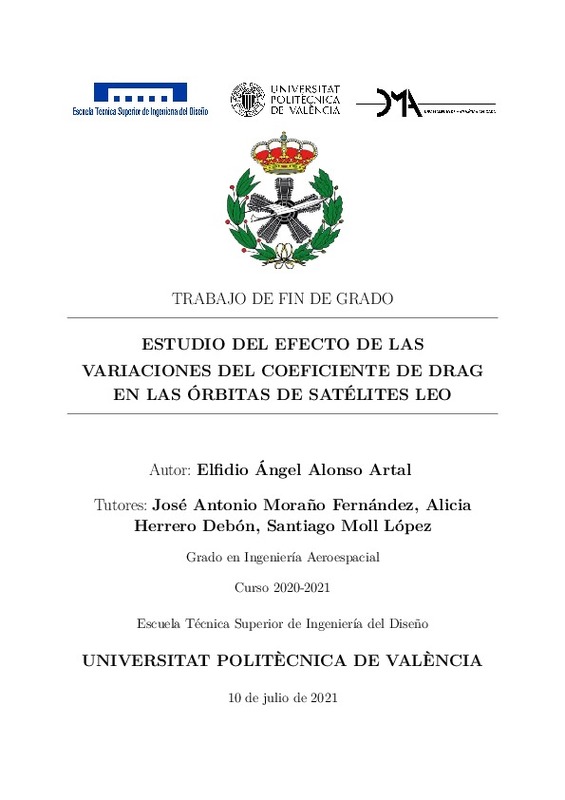JavaScript is disabled for your browser. Some features of this site may not work without it.
Buscar en RiuNet
Listar
Mi cuenta
Estadísticas
Ayuda RiuNet
Admin. UPV
Estudio del efecto de variaciones del coeficiente de Drag en las órbitas de satélites LEO
Mostrar el registro completo del ítem
Alonso Artal, EÁ. (2021). Estudio del efecto de variaciones del coeficiente de Drag en las órbitas de satélites LEO. Universitat Politècnica de València. http://hdl.handle.net/10251/171251
Por favor, use este identificador para citar o enlazar este ítem: http://hdl.handle.net/10251/171251
Ficheros en el ítem
Metadatos del ítem
| Título: | Estudio del efecto de variaciones del coeficiente de Drag en las órbitas de satélites LEO | |||
| Autor: | Alonso Artal, Elfidio Ángel | |||
| Director(es): | ||||
| Entidad UPV: |
|
|||
| Fecha acto/lectura: |
|
|||
| Resumen: |
[ES] El objetivo de este trabajo Fin de Grado es el estudio del efecto de la atmósfera sobre la trayectoria de los satélites en órbita LEO (Low Earth Orbit) atendiendo a las características del satélite, al coeficiente de ...[+]
[EN] The main goal of this work is to study the effect of the atmosphere on the trajectory of satellites in LEO (Low Earth Orbit) orbit, taking into account the characteristics of the satellite, the associated Drag coefficient ...[+]
[CA] En aquest treball es dissenya un propagador utilitzant el mètode de Cowell i incloent les pertorbacions degudes a laplanament terrestre i la resistència aerodinàmica
per a òrbites baixes (també conegudes com òrbites ...[+]
|
|||
| Palabras clave: |
|
|||
| Derechos de uso: | Reconocimiento - No comercial - Compartir igual (by-nc-sa) | |||
| Editorial: |
|
|||
| Titulación: |
|
|||
| Tipo: |
|
recommendations
Este ítem aparece en la(s) siguiente(s) colección(ones)
-
ETSID - Trabajos académicos [8906]
Escuela Técnica Superior de Ingeniería del Diseño







